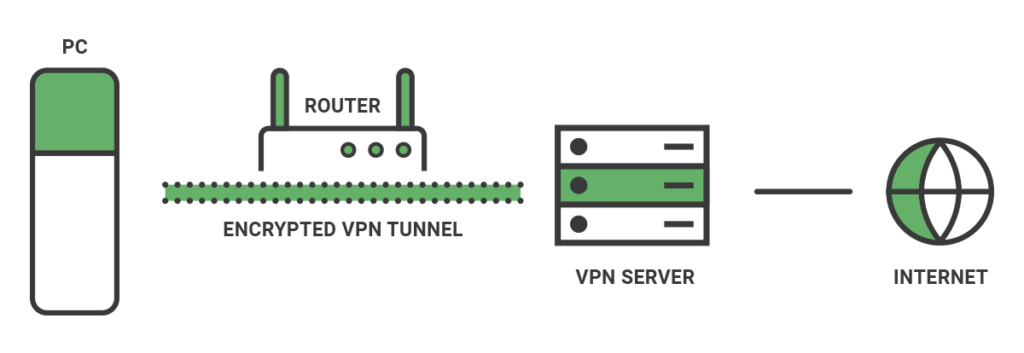You asked and we listened. Following months of hard work by our engineering team, we are excited to announce a feature that you, our passionate and highly engaged community, have been clamoring for: port forwarding.
Now available for our Windows VPN app, port forwarding is a new feature that dramatically improves download speeds when using peer-to-peer (P2P) software. It can also help performance on online gaming platforms.
Port forwarding is available for every Proton VPN user with a paid plan. If you are on our free plan, upgrade now to start benefiting from it.
UpgradeWhy do I need port forwarding when using P2P?
Peer-to-peer file-sharing protocols such as BitTorrent are used to download and upload files using a program called a P2P client.
If you don’t share (seed) your own content with others (your peers), then no content will be available for anyone. P2P protocols were designed to encourage sharing by tying download speeds to upload speeds. So the more you seed, the faster you can download content.
When you seed content, other P2P users will attempt to initiate a connection with your P2P client. It is likely these incoming connections from the internet will be blocked by the firewall we use on our VPN server.
This is not a problem if the peer trying to initiate a connection is not using a VPN or is using a VPN with port forwarding. Your P2P client will be alerted that an incoming connection has been blocked and will attempt to initiate its own connection back to the peer instead. Since this is an outgoing connection, our firewall will not block it.
However, if that peer is behind their own VPN firewall without port forwarding, you will not be able to initiate a connection or share files with them. This can impact your overall upload speeds.
As long as other peers sharing the same content are not behind firewalls with no port forwarding, you can still torrent those files, but your download speeds may be slower.
VPN firewalls without port forwarding also make the entire P2P network less efficient for everyone, an issue that is becoming increasingly important as more and more filesharers use VPNs such as Proton VPN to protect themselves while downloading.
Port forwarding explained
Port forwarding routes incoming connections through the firewall that Proton VPN uses to protect our customers.
Internet traffic enters and exits your computer through ports. These are endpoints designated by your operating system to handle incoming and outgoing connections and are identified by a number.
Many ports have a specific function assigned to them: port 443, for example, is used for HTTPS traffic, while port 6889 is used for BitTorrent traffic. Because ports are endpoints that connect the internet to your computer, they can be exploited by hackers and other malicious actors.
Your router has a built-in firewall, a piece of software that helps protect you from intrusion attempts by monitoring incoming and outgoing internet traffic and blocks access to any ports that have not been earmarked for legitimate use.

However, using a VPN bypasses your router’s firewall as it creates an encrypted tunnel that runs directly from your computer to the VPN server. This prevents the router firewall from seeing any connections made through the tunnel.

To protect our customers, Proton VPN therefore implements our own firewall on the VPN server. This performs a similar job to your router firewall, blocking suspicious incoming connections before they can enter your device through the VPN tunnel.
By default, our firewall also blocks incoming connections that you might want or need. Port forwarding solves this problem by routing incoming connections you want through the firewall and directing them to an available (open) port on your computer.
How to set up port forwarding
Proton VPN implements port forwarding in a way that works with all BitTorrent clients and is available immediately upon setup. The feature is available to everyone with a paid Proton VPN plan.
If you are on a Free plan and would like to use port forwarding, you can upgrade today.
To enable port forwarding in our Windows app, go to Settings → Advanced tab and toggle the Port Forwarding switch on. You can then connect to one of our many P2P-enabled servers. To benefit from port forwarding, you will need to configure your P2P client to use the port shown in our VPN app, which is reserved for you by Proton VPN for this purpose.
Please see our Port forwarding support article for further details and instructions on how to configure popular P2P clients to use port forwarding with our service.
Final thoughts
If you are a Windows peer-to-peer user, port forwarding can greatly improve your download speeds. We therefore encourage you to experiment with the feature, and would love to hear your feedback on our usual social media channels.
Please note that Proton VPN does not condone the use of P2P to illegally share copyrighted material.

